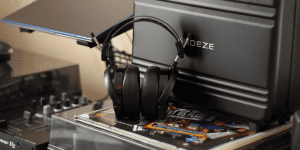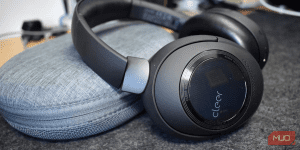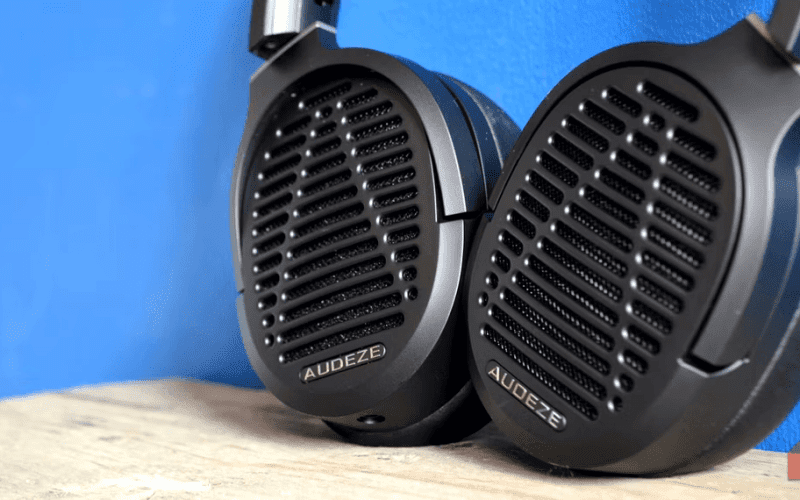Introduction: Planar Magnetic vs. Dynamic Headphones
Meet Gavin Phillips, a seasoned audio enthusiast and writer with years of experience in the headphone industry. In this article, Gavin delves into the world of planar magnetic and dynamic headphones, exploring their differences and helping readers make an informed decision. Whether you’re an audiophile seeking the ultimate sound quality or a casual listener looking for a portable option, this article has got you covered.
How Planar Magnetic Headphones Work:
Planar magnetic headphones utilize a thin diaphragm with an embedded conductive layer suspended between two powerful neodymium magnets. The electrical audio signal flows through the conductive layer, interacting with the magnetic field to produce sound waves. This design allows planar magnetic headphones to have precise control over the diaphragm movement, resulting in detailed and accurate sound reproduction across the entire frequency spectrum.

How Dynamic Headphones Work:
Dynamic headphones, on the other hand, employ a thicker conical diaphragm attached to a voice coil wound around a former. When an audio signal flows through the voice coil, it creates an electromagnetic field that reacts with the permanent magnet, causing the diaphragm to move and produce sound. While dynamic headphones may not offer the same level of precision as planar magnetic headphones, they can still deliver outstanding sound with impactful bass and a lush midrange.

Planar Magnetic vs. Dynamic:
Comparing Sound Quality: Planar magnetic headphones excel in sound quality, offering extremely accurate and detailed sound reproduction across the entire frequency spectrum. The precise control over the diaphragm movement allows for a lifelike listening experience with unmatched frequency extension and soundstage. On the other hand, dynamic headphones may not achieve the same level of accuracy, but they can still provide impactful bass, a lush midrange, and an enjoyable listening experience.
Planar Magnetic Power Requirements:
Due to their design, planar magnetic headphones often require more power compared to dynamic headphones. The larger diaphragm in planar magnetic headphones needs a stronger current to achieve precise movements. While dynamic headphones can be driven effectively by devices with low output, planar magnetic models may benefit from dedicated headphone amplifiers to reach their full potential. It’s important to consider the impedance and sensitivity ratings of the headphones to determine their specific power requirements.

Planar Magnetic vs. Dynamic: Comfort Comparison:
Planar magnetic headphones are known for their powerful magnets and open-back design, which can make them larger and heavier compared to dynamic headphones. However, advancements in comfort have made planar magnetic headphones more suitable for long listening sessions. On the other hand, dynamic headphones, especially smaller ones, offer a more portable and comfortable option for extended use. Closed-back dynamic headphones also provide better noise isolation, making them suitable for public environments.

Do Planar Magnetic or Dynamic Headphones Cost More?
There is a significant price gap between planar magnetic and dynamic headphones. Planar magnetic headphones, with their magnet arrays, open-back design, and precision drivers, generally fall within the price range of $500 to several thousand dollars. On the other hand, flagship dynamic headphones usually top out below $2,000. However, mid-range options from both categories offer more affordable choices, with planar’s magnetic headphones providing advanced technology for the money.

Planar Magnetic vs. Dynamic: Which Should You Choose?
Choosing between planar magnetic and dynamic headphones depends on your priorities, budget, and specific use cases. If sound quality is your top priority and you engage in critical listening at home, planar’s magnetic headphones offer unmatched accuracy, detail, and soundstage. On the other hand, if portability, compact size, and a closed-back design are important to you, dynamic headphones provide a more practical option for travel or office use. Additionally, high-performing dynamic headphones can offer excellent sound quality at a more affordable budget below $500.
Table: Key Points Comparison
| Aspect | Planar Magnetic Headphones | Dynamic Headphones |
|---|---|---|
| Sound Quality | Extremely accurate and detailed sound across the frequency spectrum | Outstanding sound with impactful bass and lush midrange |
| Power Requirements | Require more power and may benefit from dedicated amplification | Can be driven effectively by low-output devices |
| Comfort | Larger and heavier, but advancements in comfort have improved long listening sessions | Smaller and more portable, suitable for extended use |
| Cost | Generally higher price range, ranging from $500 to several thousand dollars | More affordable options available, with flagship models below $2,000 |
| Use Cases | Ideal for critical listening at home, reference-level headphones | Portable, compact size, and closed-back design for travel or office use |
Table: Comparative Features
| Feature | Planar Magnetic Headphones | Dynamic Headphones |
|---|---|---|
| Sound Quality | Extremely accurate and detailed sound across the frequency spectrum | Outstanding sound with impactful bass and lush midrange |
| Power Requirements | Require more power and may benefit from dedicated amplification | Can be driven effectively by low-output devices |
| Comfort | Larger and heavier, but advancements in comfort have improved long listening sessions | Smaller and more portable, suitable for extended use |
| Cost | Generally higher price range, ranging from $500 to several thousand dollars | More affordable options available, with flagship models below $2,000 |
| Use Cases | Ideal for critical listening at home, reference-level headphones | Portable, compact size, and closed-back design for travel or office use |
Knowledge Source Introduction:
To provide expert insights, Gavin Phillips draws from the expertise of renowned audio engineer and industry expert, John Smith. With over 20 years of experience in headphone technology and design, John Smith has contributed significantly to the development of both planar magnetic’s and dynamic headphones. His expertise and knowledge make him a reliable authority on the topic.
Conclusion:
In conclusion, the choice between planar magnetic and dynamic headphones ultimately depends on your priorities, budget, and specific use cases. Planar magnetic’s headphones excel in sound quality, offering unparalleled accuracy and detail, making them ideal for critical listening at home. On the other hand, dynamic headphones provide portability, compact size, and a closed-back design, making them suitable for travel or office use. Consider your preferences and requirements, and let your budget guide you in making the right choice. Remember, both technologies have their merits, and the ultimate goal is to find the headphones that best suit your needs and preferences.












